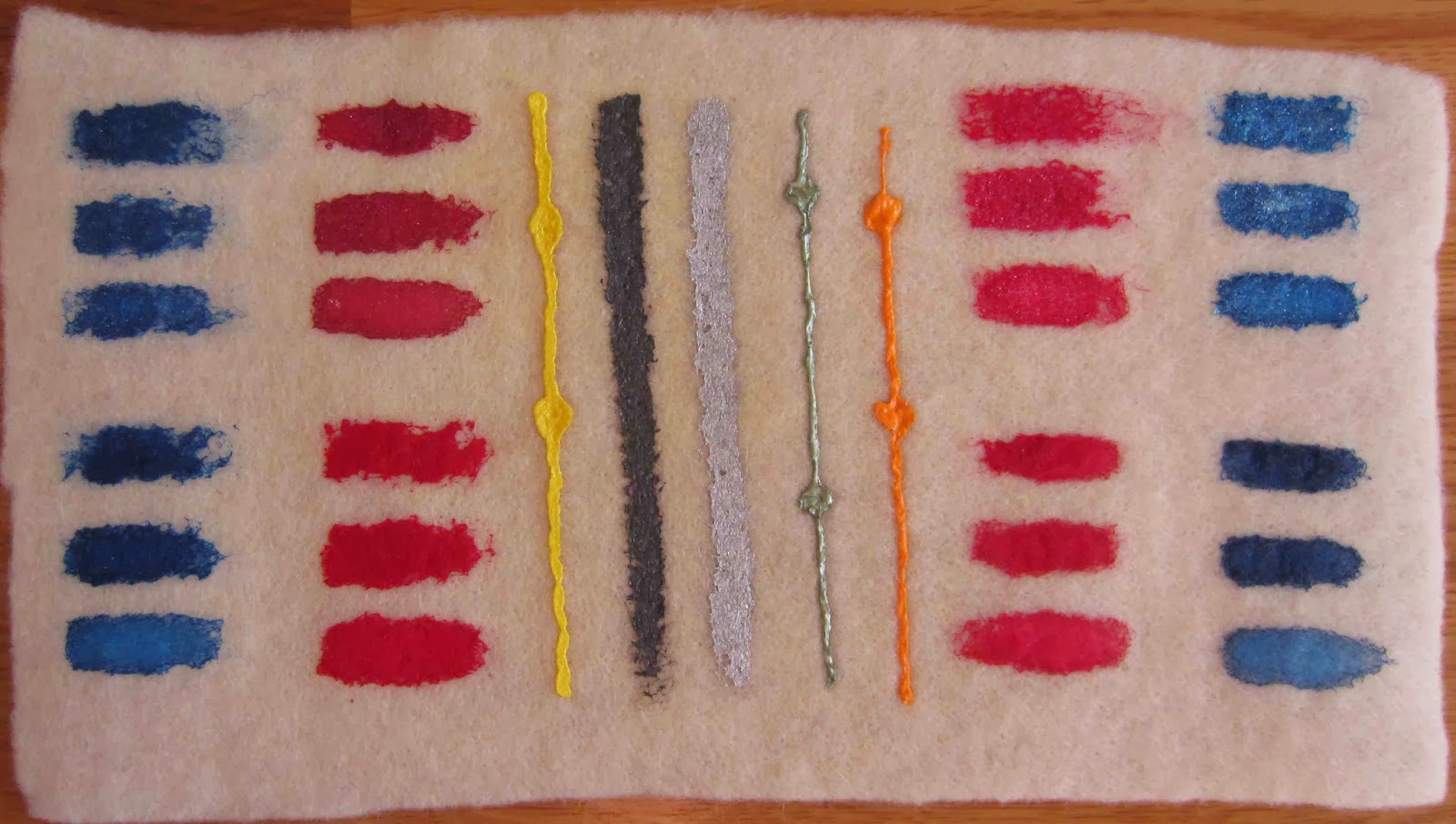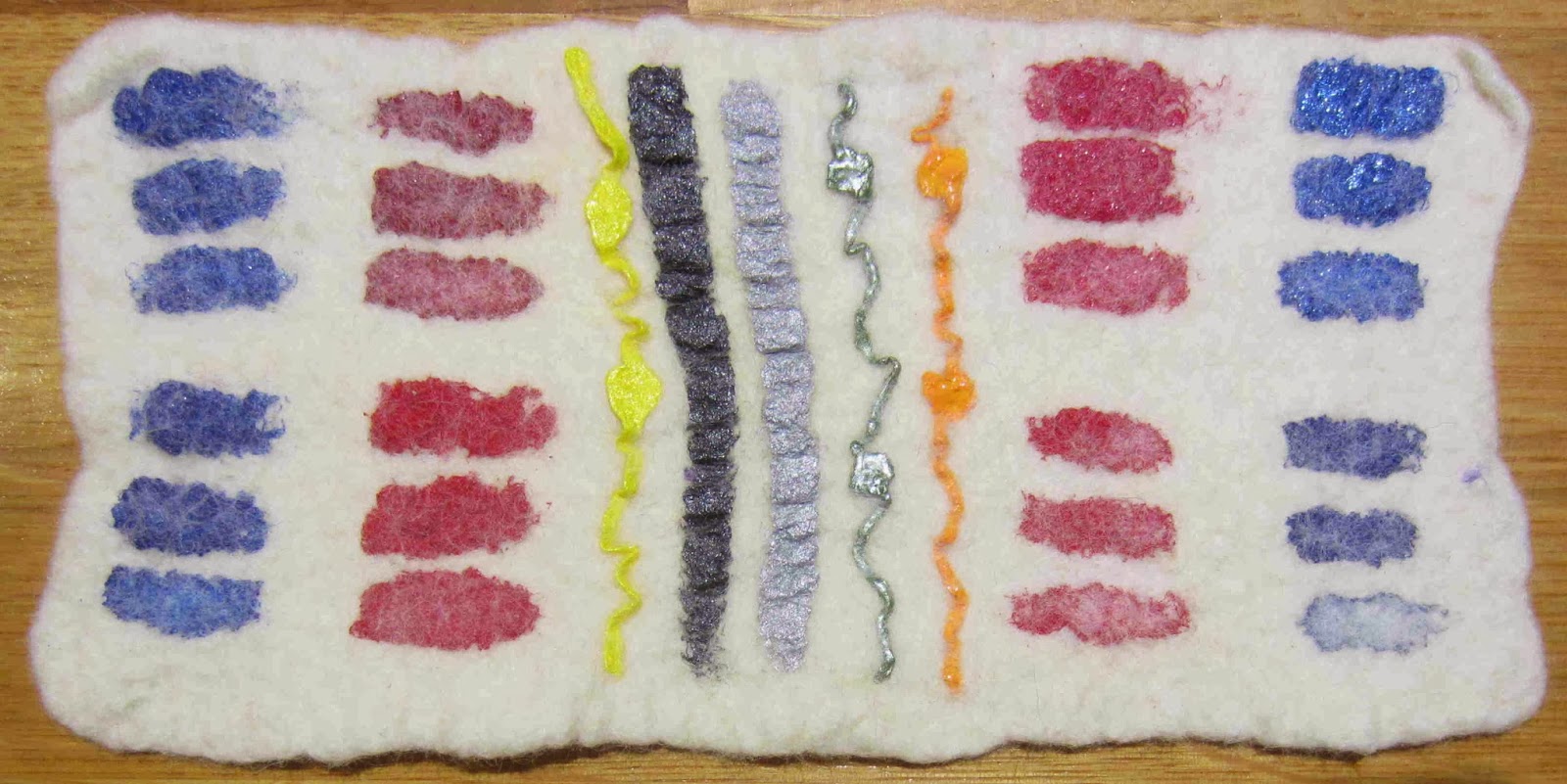This post is an extension of Ruth Lane’s excellent tutorial on the Felting and Fiber Studio blog where she describes ice dyeing for plant based fibres (silk also works well in that method).
I have been trying out a couple of different methods to dye some sheets of merino prefelt (I’m sure the same method could be used for wool top but I can’t see the point as you will loose the beautiful patterns when you come to use the fibre). This is the first (and I think the most successful and least messy) method:
- mix 1/4 cup of vinegar into each litre of warm water needed to cover your prefelt, add a drop of washing up liquid
- thoroughly soak your prefelt in the mix, gently squeezing the wool to ensure it is saturated, I left mine for 10 min before the next step. I know most people leave it soaking for a lot longer but I am too impatient!!
- cover the bottom of a large jar (canning jars are great for this) with just enough ice to cover the bottom
- sprinkle on your choice of acid-fast dye powder, I used a total of about half a teaspoon for each layer and 3 colours – black, blue and red
- gently squeeze most of the water from your prefelt but not all, it should still feel heavy with water, and drop into your jar
- cover with another layer of ice
- keep repeating steps 4 to 6 until the jar is nearly full or you have used all your felt
- finish with a layer of ice and more dye powder
- set aside overnight or until all the ice has melted
- to fix the dye it needs to be heated for 40-60 about minutes, as there is quite a lot of water in the jar from the ice, I put mine in a pan of gently simmering water for 90 min to ensure everything is heated for at least 40 min.







